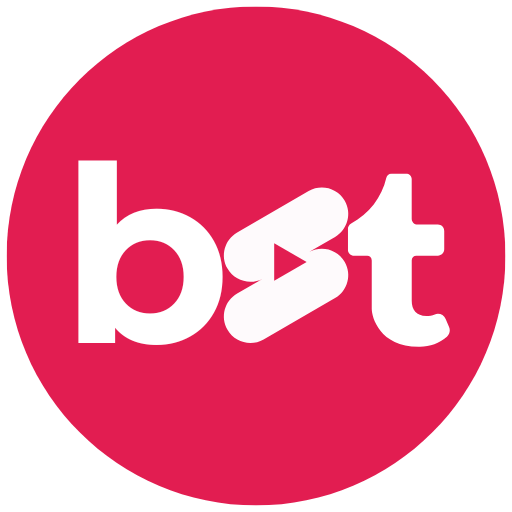20 Social Media Content Ideas for Banks
Understanding Social Media Content for Banks
Putting together interesting social media posts for banks involves understanding the importance of having a well-defined content strategy, social media management, variety, and incorporating advertising efforts into a comprehensive digital strategy.
Variety to Social Media Content Ideas For Banks Is Key

Switching up content keeps folks from scrolling right past us. Banks can really jazz things up with a mix of smart info, eye-catching visuals, and good ol’ interactive fun. That way, we don’t just draw people in; we keep ‘em around, boost customer engagement, and reach all sorts, from number-crunchers to the casually curious.
| Content Type | What It’s About | Why It Works |
|---|---|---|
| Visual | Pics, vids, infographics | Grabs eyeballs, boosts clicks |
| Educational | Articles, tips, guides | Spread the smarts, educate |
| Interactive | Polls, quizzes, surveys | Keep ’em involved, get feedback |
Got a block? Check out our social media content calendar ideas for a little nudge.
Social Media Platforms Ain’t Built the Same
Every platform’s got its vibe and crowd. Tweaking our posts to match each platform means we get noticed where it counts. Managing multiple social media channels effectively is crucial, especially for financial institutions balancing compliance with creative content marketing.
Facebook: All about that eclectic mix. Throw in some vids, articles, pics. Facebook Live’s the way to chat in real-time.
Instagram: Flash those high-quality snaps and quick vids. Stories and Reels let folks peek behind the curtain.
Twitter: Keep it snappy with short updates and links. Polls and hashtags spice things up.
LinkedIn: Perfect for the professionals. We’re talking articles, infographics, and case studies that pack a punch.
| Platform | How We Roll |
|---|---|
| Vids, visuals, and articles | |
| Snazzy pics, quick vids, Stories, Reels | |
| Brief blurbs, polls, hashtags | |
| Smart content, case studies, infographics |
Need more magic? Dive into our guide on social media content ideas for businesses.
By mixing up our content and catering it to each platform’s beat, banks can really get their groove on social media. For a bit more sparkle, visit our insights on social media video content ideas.
Choosing the Right Social Media Platforms

Choosing the right social media platforms is crucial for banks and credit unions to effectively reach their target audience. With numerous platforms available, it’s essential to select the ones that align with your institution’s goals and target audience. Here are some factors to consider when choosing the right social media platforms:
Demographics: Understand the demographics of your target audience and choose platforms that cater to those demographics. For example, if your target audience is primarily composed of young adults, platforms like TikTok and Instagram may be more effective.
Content type: Consider the type of content you want to share and choose platforms that support that content type. For example, if you want to share videos, YouTube or TikTok may be a good choice.
Engagement: Choose platforms that allow for high engagement, such as Facebook and Twitter, which enable users to comment, share, and like content.
Compliance: Ensure that the platforms you choose comply with regulatory requirements and industry standards.
Some popular social media platforms for banks and credit unions include:
Facebook: A widely used platform with a large user base, ideal for sharing educational content, promotions, and community engagement.
Twitter: A platform ideal for real-time engagement, customer service, and sharing financial tips.
Instagram: A visually-driven platform ideal for sharing engaging content, such as photos and videos, and promoting local businesses.
LinkedIn: A professional platform ideal for sharing educational content, industry news, and thought leadership pieces.
By carefully selecting the right social media platforms, banks and credit unions can effectively reach their target audience and enhance their social media presence.
Creating a Social Media Governance Policy
A social media governance policy is like a roadmap for your financial institution’s social media journey. It sets the rules of the road, ensuring everyone knows their role and how to navigate the digital landscape safely and effectively. This policy is crucial for maintaining a strong social media presence while keeping compliance and risk in check. Additionally, social media management plays a vital role in governance policies by optimizing performance and ensuring compliance across platforms.
When crafting your social media governance policy, consider these key elements:
Purpose and Scope: Clearly define why the policy exists and who it applies to within the financial institution.
Roles and Responsibilities: Outline who’s in charge of what. This includes content creation, posting, and monitoring.
Usage Guidelines: Set the ground rules for what can and cannot be shared on social media platforms.
Customer Interaction: Establish procedures for responding to customer inquiries and complaints to ensure consistent and professional communication.
Compliance and Regulations: Address the legal and regulatory requirements specific to financial institutions to avoid any compliance hiccups.
Consequences for Non-Compliance: Define what happens if someone doesn’t follow the policy.
Review and Update Process: Set a schedule for regular reviews and updates to keep the policy current with evolving social media trends and regulations.
By having a comprehensive social media governance policy, your financial institution can confidently navigate the social media landscape, ensuring a consistent and compliant social media presence.
Building a Strong Social Media Presence
Building a strong social media presence is crucial for banks and credit unions to establish their brand, engage with customers, and stay competitive in the digital age. A robust social media presence can significantly boost customer satisfaction, build trust, and drive business growth.
To create a compelling social media presence, financial institutions should focus on producing high-quality, engaging content that resonates with their target audience. This includes educational content, such as financial tips and advice, which can position your bank or credit union as a trusted source of financial knowledge. Additionally, promotional content, like special offers and product announcements, can keep your audience informed and interested.
But it’s not just about the content. Building a strong social media community is equally important. Engage with your audience by responding to their inquiries and comments promptly. Share user-generated content to show appreciation and build a sense of community. Hosting social media contests and giveaways can also drive engagement and attract new followers.
By focusing on these strategies, banks and credit unions can establish themselves as thought leaders in the financial industry, increase customer loyalty, and drive business growth. A strong social media presence is not just a marketing tool; it’s a way to connect with your customers on a deeper level and build lasting relationships.
Engaging Visual Content Ideas
Crafting eye-catching visuals on social media is like waving a friendly hello to your audience—it’s the first step in grabbing their attention. We’ve got some nifty ideas to help banks not just inform but also entertain with financial content. Managing content across different social media channels is crucial to maximize engagement and brand awareness.
Infographics Explaining Financial Concepts

Let’s face it, finance can be a snooze fest for some folks. That’s where infographics come to the rescue, promoting financial literacy by turning dry numbers into lively stories. By mixing up icons, charts, and bite-sized info, these graphics make learning about money matters a breeze. Here’s what you can whip up:
Demystifying interest rates
Steps to kickstart a savings account
Credit score breakdown
Peek into the loan application process
Financial tips for everyday savings
With infographics, followers can pocket vital knowledge without breaking a sweat. Want more nugget-sized content ideas? Peek at our article on educational content ideas for social media.
Example Infographic Topics
| Topic | What’s in the Mix? |
|---|---|
| Interest Rates | How they shake things up in loans and saving |
| Savings Accounts | Simplified steps to start saving |
| Credit Scores | The nitty-gritty details influencing scores |
| Loan Process | A smooth-sailing guide to apply |
Behind-the-Scenes at the Bank
Ever wonder what happens beyond the teller windows? Sharing a backstage pass to your bank’s daily grind can make your institution feel less like a vault and more like a community. Try these fun ideas:
A day-in-the-life snapshot of a bank teller
Tours through different bank nooks and crannies
Employee shoutouts and chit-chats
Snapshots of community events
Spotlights on local businesses and their partnerships with the bank
These candid peeks bring out the bank’s personality and its heartbeat—its people. If you’re hunting for more juice, meander over to our article on social media content ideas for small business.
Mixing in these visual goodies not only jazzes up your social feed but also fosters community engagement. Keep your magic wand handy, and remember—a sprinkle of education and entertainment keeps your followers coming back for more.
Humanizing Your Brand with People-Forward Content
Humanizing your brand is all about making your financial institution feel more personal and relatable. People-forward content can bridge the gap between your bank and its customers, fostering trust and loyalty. Here are some engaging ideas to get you started:
Employee Spotlights: Shine a light on the people who make your bank tick. Share their stories, interests, and roles within the financial institution. This not only humanizes your brand but also showcases the expertise behind your services.
Customer Testimonials: Real stories from satisfied customers can be incredibly powerful. Highlight how your financial institution has helped them achieve their financial goals, adding a personal touch to your brand.
Community Involvement: Show your audience that you’re more than just a bank—you’re a community partner. Share your involvement in local events and charitable initiatives to build a stronger connection with your audience.
Behind-the-Scenes: Give a sneak peek into the daily operations of your bank. Whether it’s a day in the life of a bank teller or a tour of your facilities, behind-the-scenes content can make your institution feel more approachable and transparent.
Incorporating people-forward content into your social media strategy can create a more human and relatable brand, resonating deeply with your audience and building brand loyalty.
Educational Content Ideas
Educational content’s a gold mine for banks that want to get chatty with their crowd by providing financial education. It spills the beans and guides folks to make smart money moves. Let’s hone in on two killer areas for content magic.
Personal Finance Tips and Tricks
Dropping personal finance nuggets sets your bank up as the go-to financial buddy in financial planning. This content doesn’t just inform—it sparks chats and shares all over social media. To kick things off, here are some sweet ideas:
Savings Suggestions: Talk about easy ways folks can stash their cash.
Budget Boss Moves: Chat about budgeting tricks and tools to keep finances in check.
Debt Handling: Share hacks on knocking out debt quicker and being smart with credit cards.
Investments 101: Break down the basics of investing, covering stocks, bonds, and retirement plans.
Understanding Personal Loans: Explain personal loans and how to use them wisely.
| Tip Category | Example Tip |
|---|---|
| Savings Suggestions | Kick off an emergency stash with at least $1,000 |
| Budget Boss Moves | Stick to the 50/30/20 rule: 50% needs, 30% fun stuff, 20% savings/pay down debt |
| Debt Handling | Zero in on wiping out the high-interest stuff first |
| Investments 101 | Look into low-cost index funds for a balanced mix |
For more juicy ideas to jazz up your content, check out our tell-all on social media content ideas.
Explaining Banking Products and Services

Let’s clear up the mystery around banking products and services, including those offered by credit unions, by emphasizing the role of customer education. A lot folks don’t know the perks and features of financial services, so let’s break it all down nice and easy.
Checking vs. Savings: Lay out the differences, perks, and who should use what.
Plastic Power (Credit Cards): Talk about the credit card buffet, how to use ‘em wisely, and why credit scores matter.
Loan Chat: Fill folks in on the different loan types (like personal, auto, and mortgage), the how-tos of application, and things to watch for.
Banking from the Couch (Online Banking): Shine a light on the ease and safety of online banking and how folks can dive in.
Example Table Explaining Banking Products:
| Product/Service | Key Features | Ideal For |
|---|---|---|
| Checking Account | Easy peasy access, debit card goodies, online bill fun | Everyday cash needs |
| Savings Account | Juicy interest, limited transactions | Rainy day fund |
| Credit Card | Sweet rewards, credit score booster, fraud shield | Daily buys, building credit street cred |
| Personal Loan | Steady rates, pay as you go | Big buys, rolling debts into one |
Liven things up with quizzes and polls alongside this tell-all content. Sneak a peek at our educational content ideas for social media for more sparks.
With these educational gems, we’re set to shower our audience with loads of value, building trust and stirring up a lively dance on social media.
Interactive Content Ideas
Trying to keep up with social media when you’re a bank isn’t always a walk in the park. But when we get it right, it can be as rewarding as finding a forgotten 20-dollar bill in your coat pocket. Interactive content, such as polls and surveys, not only sparks interaction but also gathers valuable customer feedback about financial habits. We’ve cooked up a couple of engaging content ideas that keep our audience hooked: polls and surveys about financial habits, and quizzes to flex that financial brainpower!
Polls and Surveys on Financial Habits
Polls and surveys aren’t just for branding; they’re also a crucial part of market research, providing a great way to engage potential customers and gather insights. They’re like little treasure hunts where we gather juicy tidbits about how our audience handles their moolah. Ask the right questions, and we not only learn the secrets to their financial souls but also tailor what we offer to make them even happier customers.
Curious what questions might tickle their fancy? How about:
How often do you peek at your bank statements?
What’s your go-to method for stashing cash away for a rainy day?
Do you stick to a budget or is it more of a suggestion?
With surveys, we can also get the scoop on how savvy our clients are about money stuff and see where they might need a little extra hand-holding. Here’s a peek at what survey results can look like:
| Question | Response Option | People Who Said This (%) |
|---|---|---|
| Money-saving Frequency | Weekly | 30 |
| Monthly | 50 | |
| Rarely | 20 | |
| Are You Using Mobile Banking? | Yes | 70 |
| No | 30 |
Want more fun ideas? Hop over to our piece on social media content calendar ideas for a buffet of options.
Quizzes to Test Financial Knowledge
Quizzes are like the Swiss Army knife of content—educational, fun, and handy for showing off those finance smarts! By serving up questions on everything from basic banking terms to saving techniques, we can help our followers beef up their financial IQ while keeping the mood lively.
Try quizzing them with questions like:
What’s an interest rate?
How exactly does a credit card do its thing?
Can you explain the contrast between a checking account and a savings account?
These quizzes not only show we’re a go-to for financial know-how but also ramp up the buzz on our social media, significantly boosting our engagement rate.
Looking for more ways to get your audience talking? Take a gander at our guide on interactive content for social media for more inspo.
By throwing these interactive ideas into the mix, we can whip up some seriously compelling social media content that hooks our audience and teaches ‘em a thing or two about keeping their finances in check!
User-Generated Content Ideas
Building a connection with our audience doesn’t have to be rocket science. User-generated content plays a crucial role in fostering brand advocacy. Let’s dive into some fresh content ideas that’ll keep things real: customer success stories and bank employee highlights. Trust us, they’re winners.
Customer Success Stories
Who doesn’t love a good success story? Sharing real-life victories about how folks have achieved their money dreams with a little help from us can build trust and enhance customer loyalty. It’s how we build trust and get folks inspired. You know, showing how we’ve been the game-changer in someone’s financial journey just might be the push some folks need. Highlighting these success stories also plays a crucial role in customer retention by demonstrating our ongoing commitment to their financial well-being.
Story Parts:
Customer’s initial money woes
How we swooped in to save the day
That sweet victory moment
Words straight from our happy customer
Example Post Layout:
| Customer | Initial Challenge | Bank’s Assistance | Outcome | Testimonial |
|---|---|---|---|---|
| Jane Doe | Drowning in debt | Tailor-made debt plan | Debt-free in 2 years | “Their support and guidance got me back on track.” |
| John Smith | Newbie homebuyer | Expert mortgage advice | Got his dream abode | “Their team turned my homeowning dream into reality.” |
Don’t forget the power of a good pic or video to really bring the story home. Of course, always ask before you snap!
Bank Employee Spotlights
Our people are the heart of what we do at any bank or credit union. Shine a light on the folks who keep things running smoothly. These spotlights give a peek into the expertise and passion of our crew, helping put a human face to our services and boosting employee engagement.
Spotlight Bits:
What they do every day
Their path to here
A random fun fact or hobby
Why they love working with us
Example Post Layout:
| Employee | Role | Career Journey | Fun Fact | Enjoyment in Role |
|---|---|---|---|---|
| Sarah Lee | Financial Advisor | Banking for a decade | Loves running marathons | “Helping clients sort out their finances is my passion.” |
| Alex Brown | Loan Officer | Started right after college | Rocks out on the guitar | “It’s rewarding guiding folks to their new homes.” |
A great image or quick video can make these stories pop, putting friendly faces to our name and helping grow that community feel.
Got a creative itch for more? We’ve got plenty of social media content ideas and some tailored ones for our small business friends and even for restaurants looking to spice it up. Let’s keep the ideas rolling!
Building Vibrant Online Communities
Creating vibrant online communities is an essential part of a bank or credit union’s social media strategy. These communities provide a platform for customers to connect, share experiences, and receive support from the financial institution.
To build a thriving online community, financial institutions should focus on fostering a welcoming and inclusive environment. This starts with actively responding to customer inquiries and comments, showing that you value their input and are there to help. Sharing user-generated content can also make your community members feel appreciated and more connected to your brand.
Hosting social media contests and giveaways is another effective way to engage your community. These activities not only generate excitement but also encourage participation and interaction among your followers.
Providing valuable content and resources is key to keeping your community engaged. Share educational content, such as financial tips and advice, to help your audience make informed decisions. Promotional content, like special offers and product announcements, can also keep your community members informed and interested.
By building a vibrant online community, banks and credit unions can increase customer engagement, build trust, and drive business growth. A strong online community can turn customers into brand advocates, enhancing your institution’s reputation and reach.
Measuring Success and ROI
Understanding the impact of your social media efforts is crucial for making informed decisions and optimizing your strategy. By measuring success and ROI through performance metrics, you can see what’s working and where there’s room for improvement.
Additionally, social media management plays a vital role in tracking and optimizing performance across various platforms.
Tracking Key Metrics and Performance
Here are the key metrics to keep an eye on:
Engagement Metrics: Track likes, comments, shares, and other interactions to gauge how your audience is engaging with your content.
Reach Metrics: Monitor the number of people viewing your content, including impressions and views, to understand your content’s visibility.
Conversion Metrics: Measure the number of conversions, such as website traffic, lead generation, and sales, to see how your social media efforts are driving business results.
Customer Satisfaction Metrics: Use surveys, feedback forms, and other methods to track customer satisfaction and gather insights on their experience.
ROI Metrics: Calculate the return on investment of your social media efforts by comparing the revenue generated and cost savings against your social media expenses.
To effectively track these metrics, consider using tools like:
Hootsuite Insights
Sprout Social
Agorapulse
Google Analytics
By leveraging these tools and focusing on key metrics, you can measure the success and ROI of your social media strategy, making data-driven decisions with data analytics to enhance your efforts and achieve your goals.
Best Practices for Social Media Advertising
Social media advertising, with a strong emphasis on ad targeting, is an effective way for banks and credit unions to reach their target audience and promote their products and services. Here are some best practices for social media advertising:
Targeting: Use targeting options to reach your desired audience, such as demographics, interests, and behaviors. This ensures your ads are seen by the right people.
Ad creative: Use eye-catching ad creative, such as images and videos, to grab users’ attention. High-quality visuals can make a significant difference in engagement.
Clear messaging: Ensure that your ad messaging is clear, concise, and aligns with your institution’s brand voice. Avoid jargon and keep it straightforward.
Call-to-action: Include a clear call-to-action (CTA) in your ads, such as “Learn More” or “Apply Now.” This guides users on what to do next.
Budgeting: Set a budget for your social media advertising campaigns and monitor your ad spend regularly. This helps in optimizing your advertising efforts.
Some popular social media advertising platforms for banks and credit unions include:
Facebook Ads: A widely used platform with a large user base, ideal for targeting specific audiences and promoting products and services.
LinkedIn Ads: A professional platform ideal for targeting business owners and professionals.
Twitter Ads: A platform ideal for real-time engagement and promoting financial tips and industry news.
By following these best practices, banks and credit unions can maximize the effectiveness of their social media advertising campaigns and achieve their marketing goals.
Partnerships and Influencer Marketing for Banks
Brand partnerships and influencer marketing can be an effective way for banks and credit unions to reach new audiences and promote their products and services. Here are some tips for partnerships and influencer marketing:
Identify influencers: Identify influencers who align with your institution’s brand values and target audience. Look for influencers who have a genuine connection with their followers.
Collaborate with influencers: Collaborate with influencers to create sponsored content, such as social media posts and videos. This can help in reaching a wider audience.
Partner with local businesses: Partner with local businesses to promote their products and services and support the local community. This can enhance your institution’s community presence.
Measure ROI: Measure the return on investment (ROI) of your partnerships and influencer marketing campaigns to ensure they are effective. Track metrics such as engagement, reach, and conversions.
By leveraging partnerships and influencer marketing, banks and credit unions can enhance their social media strategy and connect with a broader audience.
Collaborating with Social Media Influencers
Collaborating with social media influencers through effective influencer outreach can be an effective way for banks and credit unions to reach new audiences and promote their products and services. Here are some tips for collaborating with social media influencers:
Choose influencers who align with your brand: Choose influencers who align with your institution’s brand values and target audience. This ensures authenticity and relevance.
Clearly define the partnership: Clearly define the partnership, including the scope of work, compensation, and expectations. This helps in setting clear goals and avoiding misunderstandings.
Create sponsored content: Create sponsored content, such as social media posts and videos, that promotes your institution’s products and services. Ensure the content is engaging and informative.
Monitor and measure ROI: Monitor and measure the ROI of your influencer marketing campaigns to ensure they are effective. Track metrics such as engagement, reach, and conversions.
By collaborating with social media influencers, banks and credit unions can enhance their social media presence and connect with a wider audience.
Staying Compliant on Social Media
Staying compliant on social media through regulatory compliance is crucial for banks and credit unions to avoid regulatory risks and maintain customer trust. Here are some tips for staying compliant on social media:
Understand regulatory requirements: Understand regulatory requirements, such as the Gramm-Leach-Bliley Act (GLBA) and the Federal Trade Commission (FTC) guidelines. This helps in ensuring compliance.
Develop a social media policy: Develop a social media policy that outlines guidelines for social media use, including content creation, engagement, and advertising. This provides a clear framework for employees.
Monitor and report: Monitor and report on social media activity, including customer complaints and feedback. This helps in identifying and addressing issues promptly.
Train employees: Train employees on social media compliance and regulatory requirements. This ensures that everyone is aware of the guidelines and follows them.
By staying compliant on social media, banks and credit unions can maintain customer trust and avoid regulatory risks.
Understanding Compliance and Risk Management
Risk assessment is crucial for understanding compliance and risk management, helping banks and credit unions to avoid regulatory risks and maintain customer trust. Here are some tips for understanding compliance and risk management:
Regulatory requirements: Understand regulatory requirements, such as the GLBA and FTC guidelines. This helps in ensuring compliance.
Risk management: Develop a risk management plan that outlines potential risks and mitigation strategies. This helps in proactively addressing risks.
Compliance training: Provide compliance training to employees on social media use and regulatory requirements. This ensures that everyone is aware of the guidelines and follows them.
Monitoring and reporting: Monitor and report on social media activity, including customer complaints and feedback. This helps in identifying and addressing issues promptly.
By understanding compliance and risk management, banks and credit unions can maintain customer trust and avoid regulatory risks.
Seasonal and Trending Content Ideas
Keeping your social media fans glued to your feed means tapping into content trends, the season’s buzz, and the latest crazes. Got you curious? Here’s a bunch of awesome ideas for your next big hit.
Holiday Savings Tips
Ah, the holiday season! That time of year when wallets are often emptier than Santa’s cookie plate. With shopping sprees, epic travels, and parties galore, thoughts – and worries – turn to spending. Emphasizing seasonal promotions in your holiday savings tips can serve up some genius money-saving hacks that win over hearts and minds. Seriously, folks love that stuff.
| Holiday | Savings Tips |
|---|---|
| Thanksgiving | Cook up a storm without crushing your wallet |
| Christmas | Hunt sales like a pro to score gifts at the best prices |
| New Year | Nail down those money goals like a boss |
Whip up catchy infographics or quick vid clips to make those savings tips pop. This magic touch not only informs but is catnip for sharing, keeping your posts traveling far and wide. Wanna dive deeper? Wander over to our guides on thanksgiving social media content ideas and christmas content ideas for social media.
Trending Financial News Explained
Financial updates are crucial in trending financial news. No one wants eyes glazing over when folks talk numbers. Break down the latest hot stuff in finance and share it through effective social media marketing so your crowd stays informed without the headache. Pack those insights into easy, snackable bites. This could mean breaking down interest rates, market jitters, or rule changes coming at ya.
Example of Trending News Topics
| Topic | Explanation |
|---|---|
| Interest Rate Changes | What it means for your loans and piggy bank |
| Market Volatility | Keep your investments safe from the rollercoaster |
| New Financial Regulations | What it means when bank rules play musical chairs |
Toss in cool visuals like charts and graphs to make these financial tidbits not just smarter but way more digestible, too. When your pals understand the money talk, you help them decipher the dollar dazzle. For more light bulb moments, peek at our pages on social media content ideas for financial advisors and educational content ideas for social media.
Blend these seasonal and trending topic vibes into your social media game plan to stay sharp and keep those followers buzzing. Your bank’s page will stay as fresh as morning coffee, satisfying the curious minds of your audience.
Future of Social Media for Banks
The future of social media for banks is both exciting and rapidly evolving. With new platforms and formats emerging, financial institutions must stay agile and adapt to these changes to remain competitive.
The Rise of New Platforms and Formats
New social media platforms and formats are constantly emerging, and banks and credit unions must be prepared to adapt. For instance, TikTok has gained immense popularity among younger generations, presenting a unique opportunity for financial institutions to reach this demographic with creative and engaging content.
In addition to new platforms, financial institutions should also explore new content formats, such as video and live streaming. These formats offer a dynamic way to connect with customers, providing valuable content and resources in an engaging manner. Live Q&A sessions, behind-the-scenes tours, and educational webinars are just a few examples of how banks can leverage these formats to enhance their social media presence.
By staying ahead of the curve and embracing new platforms and formats, financial institutions can connect with their audience in innovative ways, ensuring they remain relevant and engaging in the ever-changing social media landscape.
Taking Your First Steps in Banking Social Media
Taking your first steps in banking social media can seem daunting, but with a clear strategy and plan, financial institutions can establish a strong social media presence and drive business growth.
Start by defining your target audience. Understanding who you want to reach will help you tailor your content and choose the right platforms. Next, focus on creating high-quality content that resonates with your audience. This includes educational content, such as financial tips and advice, as well as promotional content, like special offers and product announcements.
Building a strong social media community is also crucial. Engage with your audience by responding to their inquiries and comments, sharing user-generated content, and hosting social media contests and giveaways. This will help you build a loyal following and foster a sense of community.
Don’t be afraid to experiment with new platforms and formats. Platforms like TikTok and content formats like video and live streaming offer unique opportunities to connect with your audience in engaging ways.
By taking these first steps, financial institutions can establish themselves as thought leaders in the financial industry, increase customer loyalty, and drive business growth. A well-executed social media strategy can transform your bank or credit union’s online presence, making it a valuable asset in today’s digital world.







